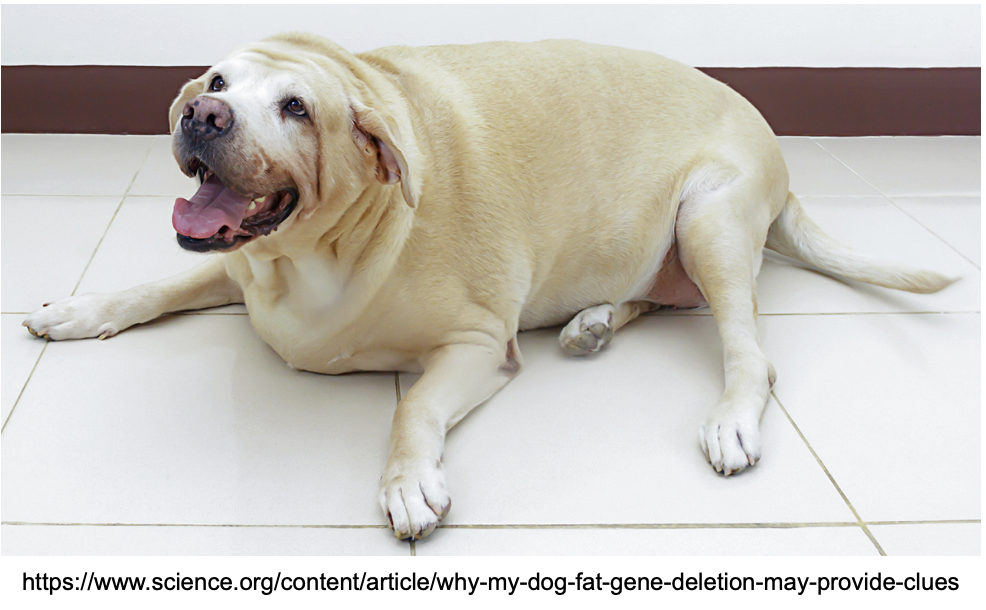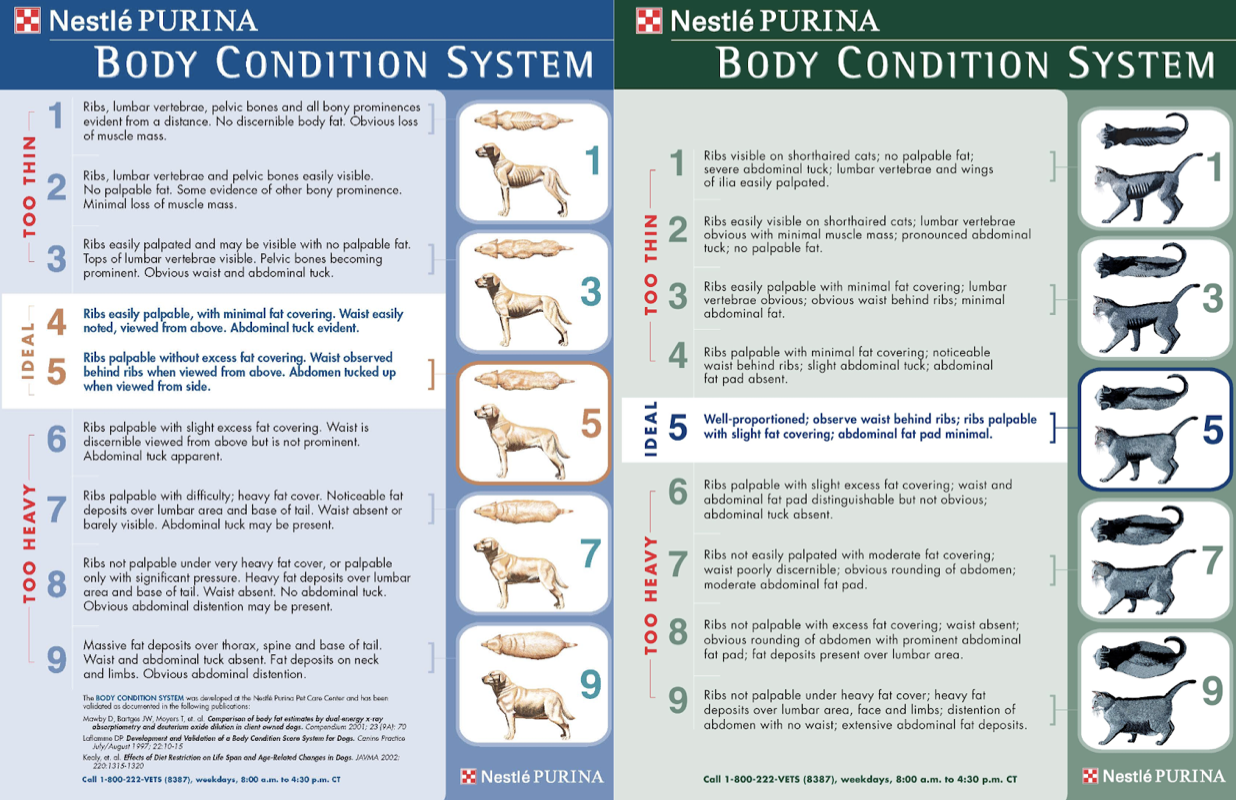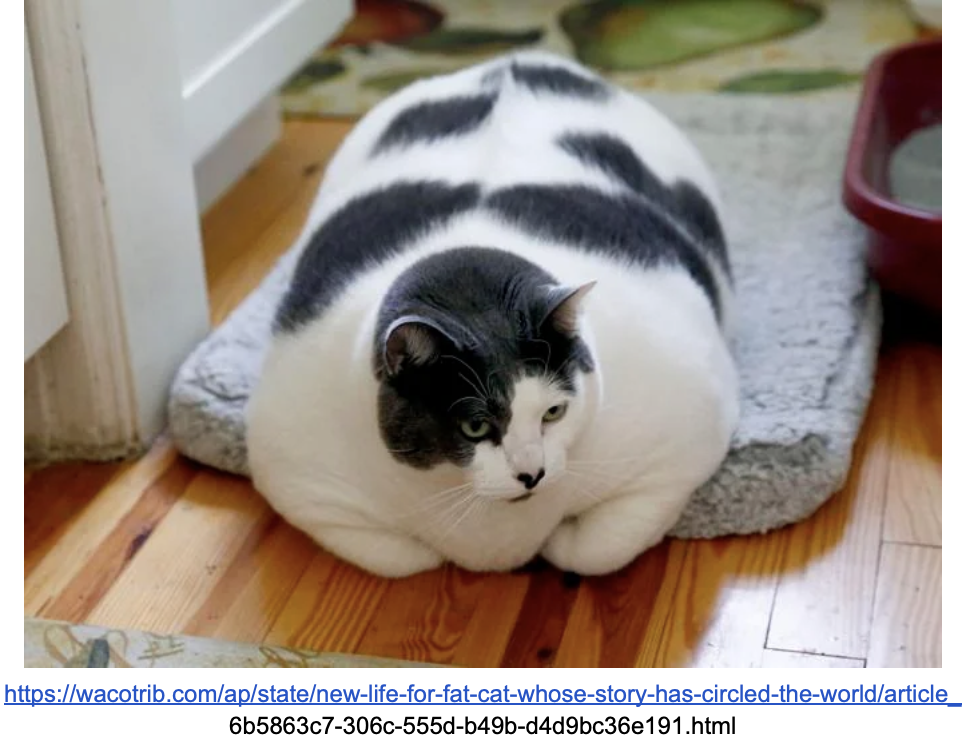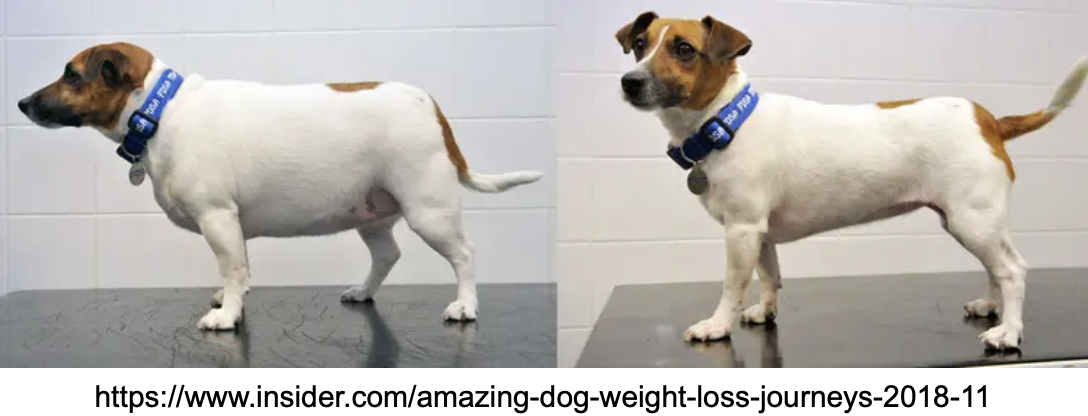Welcome to the final installment of Care and Feeding (for now!). I wanted to talk about a sensitive subject – obesity in our companion pets. While Garfield made for an adorable cartoon cat, in real life carrying some extra weight can have serious consequences for our canine and feline friends.
For every physical exam, our medical templates have a spot for BCS or “Body Condition Score.” There are two main scales that people use – a scale of 1-5 out of 5 or 1-9 out of 9. Purina has really nice charts available that note what features we are looking at and also gives a visual for each one.
If you are not sure where your pet falls on this chart, ask! We as veterinarians are very happy to discuss weight and also help you figure out how many calories per day are needed to attain or maintain your dog or cat’s goal. It takes an honest discussion about exactly what your dog or cat is eating each day and an analysis of how many calories that actually adds up to. And while exercise can be helpful, it truly can be difficult to get some dogs and cats to exercise more, so while things like walking more (great for the whole family!) or increased laser play at home can help, the more important thing is to figure out what a good amount of calories is for your individual cat or dog and their specific lifestyle.
I realize that it can be very difficult to control all of the factors surrounding calorie intake. I hear things like “my mother keeps giving him table scraps, even when I tell her to stop!” “Sometimes we accidentally double feed her dinner if I don’t know that my son has fed her!” “He keeps getting into the other cat’s food!” “If I don’t feed him he won’t leave me alone!” “I can’t exercise an indoor cat!” These are all legitimate challenges. Family members can be difficult to get through to, but I have literally had people call their parents (or husbands) in an exam room with me and had me tell them that the extra treats were making their dog or cat obese and even though those treats were given with love and affection it was putting their beloved pet at risk. Diabetes, arthritis, ACL tear/other orthopedic injuries, kidney disease, high blood pressure, pancreatitis – these are all diseases that dogs and cats are at higher risk for when they are “carrying a little extra weight.” Arthritis can actually be a major player in quality of life discussions as cats and dogs age – ESPECIALLY larger dogs that you can’t just pick up and tuck under your arm to carry outside. Cats and dogs can be difficult to give insulin to if they develop diabetes, and diabetes can lead to cataracts, increased risk of infection, increased risk of pancreatitis. Also, buying insulin and needles and having them come into the office when they need their blood sugars checked – that all adds up. It is worth it in the long run to try to figure out a method to keep your overweight cat from eating out of everyone else’s bowls.
There is an excellent website dedicated to addressing obesity in cats and dogs run by the Association for Obesity Prevention:
https://www.petobesityprevention.org/pet-weight-check
If you look under “Tools and Resources” at the top of the page there is a lot of information to read through including its own body condition scoring chart, dog and cat weight loss information, pet caloric needs and ideal pet weight ranges. That said, definitely have a conversation with one of us about your own dog or cat’s specific caloric needs. There are low calorie OTC and prescription diets on the market that can help – and if a diet is lower calorie than your cat or dog’s current diet, they can eat the same volume for less calories, which hopefully means less bugging you because they don’t feel full. In dogs, thyroid testing can be helpful – dogs can develop hypothyroidism that lowers their metabolism and makes weight loss very difficult without supplementing the thyroid (just like in people). It can be worth it to make sure there is nothing like that working against you if the weight is not coming off the way we want it to.
I promise you, if we say “well, muffin could stand to lose a little weight” or something similar during an exam, we are absolutely not trying to be cruel or “body shame” your furry family member. Our job is to be honest about health risks and advocate for every dog and cat we see. We wouldn’t be doing our job if we didn’t mention it and offer to discuss ways that your specific dog or cat can achieve our health goals for them.
I hope you have enjoyed my series on care and feeding! Please talk to your vet if you have specific feeding questions about your cat or dog.
–Dr. Dana Muir



